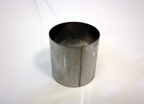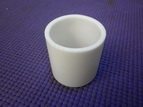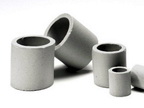Raschig Ring Packing
Tower Packing>> Random Packing >> Raschig Ring
 |
 |
 |
| Metal Raschig Ring | PEFE Raschig Ring | Ceramic Raschig Ring |
About Raschig Ring
Raschig rings are pieces of cylindrical tube
(approximately equal in length and diameter) used in large numbers
as a packed bed within columns for distillations and other chemical
engineering processes. They are usually ceramic,metal or special
plastic and provide a large surface area within the volume of the
column for interaction between liquid and gas or vapour. Raschig
rings are named after their inventor, the German chemist Friedrich
Raschig.
They form what is now known as random packing, and enabled Raschig
to perform distillations of much greater efficiency than his
competitors using fractional distillation columns with trays.
In a distillation column, the reflux or condensed vapour runs down
the column, covering the surfaces of the rings, while vapour from
the reboiler goes up the column. As the vapour and liquid pass each
other countercurrently in a small space, they tend towards
equilibrium. Thus less volatile material tends to go downwards, more
volatile material upwards.
They are also used for devices where gas and liquid are put in
contact for purposes of gas absorption, stripping or chemical
reaction, and as a support for biofilms in biological reactors.
Raschig rings made from borosilicate glass are sometimes employed in
the handling of nuclear materials, where they are used inside
vessels and tanks containing solutions of fissile material, for
example solutions of enriched uranyl nitrate, acting as neutron
absorbers and preventing a potential criticality accident.

